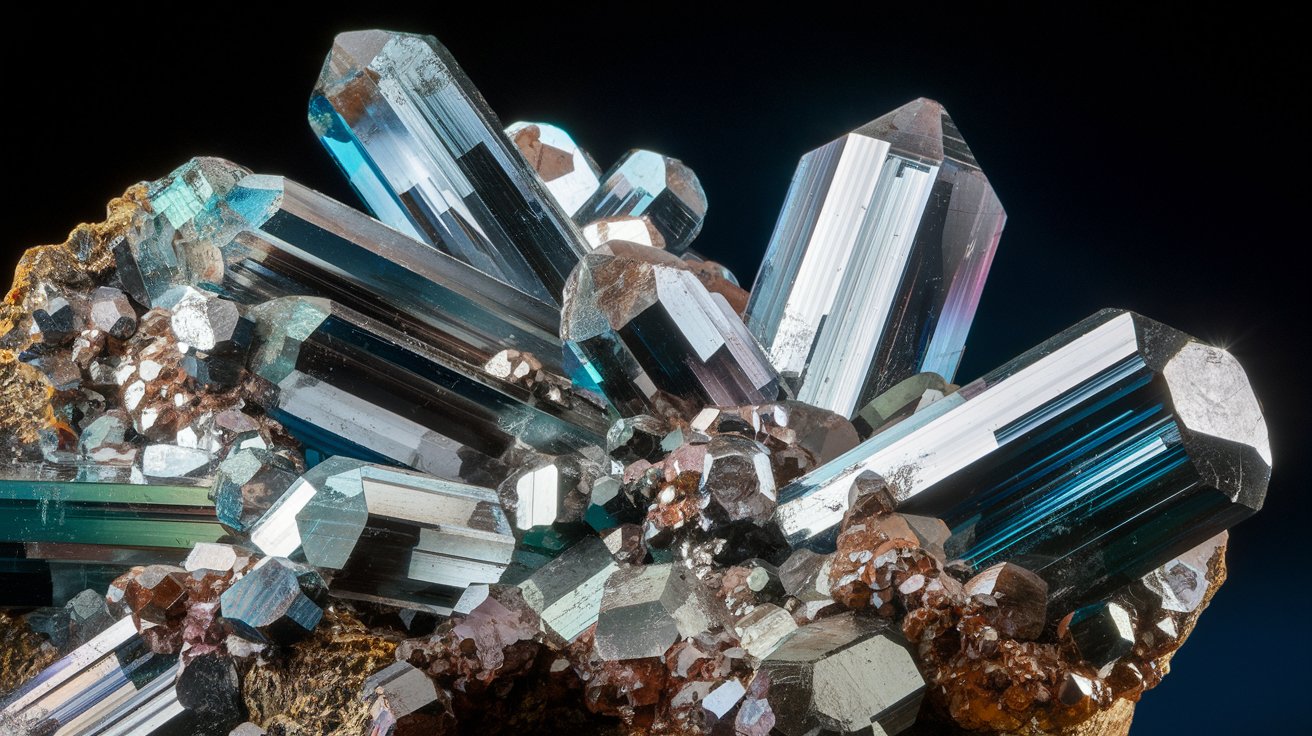
Lanthanum Mercury might sound like a term from a sci-fi novel, but it's a fascinating topic in the world of chemistry. Lanthanum is a rare earth element, known for its use in camera lenses, batteries, and even hybrid cars. Mercury, on the other hand, is a heavy metal with unique properties, like being liquid at room temperature. When combined, these elements create intriguing compounds with potential applications in various fields. Ever wondered what makes these elements so special? Here are 30 facts that will give you a deeper understanding of Lanthanum Mercury, its properties, uses, and why scientists find it so captivating.
Key Takeaways:
- Lanthanum and mercury have unique properties and diverse uses in science and industry. Lanthanum is essential for lenses, batteries, and lighting, while mercury is used in thermometers, lighting, and even gold extraction.
- Both elements have environmental and health concerns. Mercury is toxic and can harm the environment, while lanthanum, though less toxic, requires careful handling. Research for safer alternatives is ongoing.
What is Lanthanum?
Lanthanum is a chemical element with the symbol La and atomic number 57. It belongs to the rare earth elements group, known for their unique properties and applications.
- Lanthanum was discovered in 1839 by Carl Gustaf Mosander, a Swedish chemist.
- It is a soft, ductile, silvery-white metal that tarnishes rapidly when exposed to air.
- Lanthanum is the first element in the lanthanide series, a group of 15 elements.
- It is often found in minerals like monazite and bastnäsite.
- Lanthanum compounds are used in carbon lighting applications, such as studio lighting and cinema projection.
Uses of Lanthanum
Lanthanum has various applications due to its unique properties. Here are some interesting uses of this element.
- Lanthanum oxide is used in camera and telescope lenses to improve their optical properties.
- It is a key component in the production of nickel-metal hydride (NiMH) batteries, commonly used in hybrid vehicles.
- Lanthanum is used in the petroleum industry as a catalyst for refining crude oil.
- It is also used in the production of special types of glass, including infrared-absorbing glass.
- Lanthanum compounds are utilized in the manufacturing of phosphors for color television tubes and LED lights.
What is Mercury?
Mercury is a chemical element with the symbol Hg and atomic number 80. It is unique among metals for being liquid at room temperature.
- Mercury was known to ancient civilizations and was used by the Greeks, Romans, Chinese, and Hindus.
- It is a heavy, silvery metal that is liquid at room temperature, making it unique among metals.
- Mercury is commonly found in the mineral cinnabar (mercury sulfide).
- It is used in thermometers, barometers, and other scientific instruments.
- Mercury is also used in dental amalgams for fillings and in the production of chlorine and caustic soda.
Uses of Mercury
Mercury has a variety of applications, some of which are quite surprising. Here are some notable uses.
- Mercury is used in fluorescent lamps and some types of light bulbs.
- It is a key component in the production of certain types of batteries, such as mercury oxide batteries.
- Mercury is used in the extraction of gold and silver from ores.
- It is also used in the manufacturing of some pharmaceuticals and cosmetics.
- Mercury vapor is used in streetlights, advertising signs, and other types of lighting.
Lanthanum and Mercury in Science
Both lanthanum and mercury have significant roles in scientific research and applications.
- Lanthanum is used in the study of high-temperature superconductors.
- Mercury is used in the study of fluid dynamics due to its unique liquid state at room temperature.
- Lanthanum compounds are used in the development of new materials with unique magnetic and electronic properties.
- Mercury is used in the calibration of scientific instruments due to its stable properties.
- Lanthanum is used in the production of catalysts for various chemical reactions.
Environmental and Health Concerns
Both elements have environmental and health impacts that need to be managed carefully.
- Mercury is highly toxic and can cause serious health issues, including neurological damage.
- Lanthanum is considered to have low toxicity, but its compounds can be harmful if ingested or inhaled.
- Mercury pollution is a significant environmental concern, particularly in water bodies where it can accumulate in fish.
- Proper disposal and recycling of products containing mercury are crucial to prevent environmental contamination.
- Research is ongoing to find safer alternatives to mercury in various applications.
Final Thoughts on Lanthanum and Mercury
Lanthanum and mercury, two elements with unique properties, play crucial roles in various fields. Lanthanum is vital in optics, electronics, and even hybrid car batteries. Its ability to improve the brightness and efficiency of camera lenses and projectors makes it indispensable. On the other hand, mercury has a storied history in thermometers, barometers, and fluorescent lighting. Despite its toxic nature, mercury's ability to conduct electricity and form amalgams with other metals is unmatched.
Understanding these elements helps appreciate their contributions to modern technology and industry. While lanthanum continues to push the boundaries of innovation, mercury's applications remind us of the importance of handling materials responsibly. Both elements, with their distinct characteristics, underscore the fascinating complexity of the periodic table. Embracing this knowledge enriches our grasp of the world around us.
Frequently Asked Questions
Was this page helpful?
Our commitment to delivering trustworthy and engaging content is at the heart of what we do. Each fact on our site is contributed by real users like you, bringing a wealth of diverse insights and information. To ensure the highest standards of accuracy and reliability, our dedicated editors meticulously review each submission. This process guarantees that the facts we share are not only fascinating but also credible. Trust in our commitment to quality and authenticity as you explore and learn with us.
